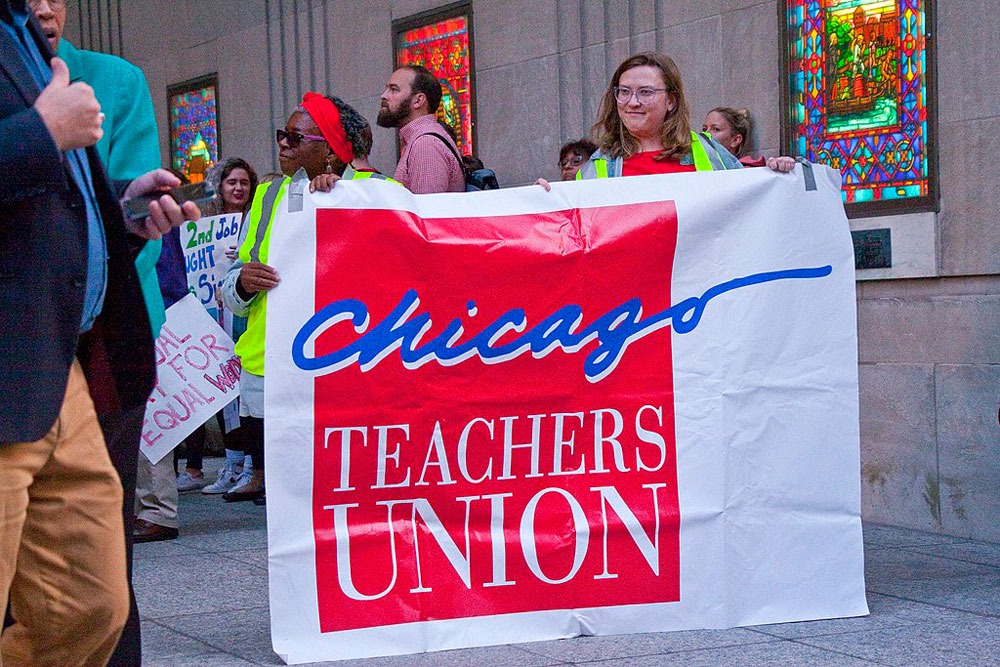
October 20, 2019; Colorlines, The Conversation, The Root, and CBS Chicago
Don’t expect the Chicago Public Schools to be open today. The schools have been closed by a teachers’ strike since Thursday, and while negotiations have continued throughout the weekend, it seems unlikely that a settlement will be reached and classes will resume. The sticking point for the 30,000 teachers, who have received wide support from parents and community groups, is not money. Rather, the issues at stake concern social justice and health and safety for teachers, students, and their families.
As it heads into its third school day, the strike lies in the hands of a new mayor looking to keep her promises while still demonstrating her strength; a union looking to build its strength; and a predominantly Black and Latinx school district with overcrowded classes, limited resource staff (nurses, counselors, and librarians), students who do not feel safe, and overworked staff. After 10 months of negotiations leading to this point, a quick settlement doesn’t seem likely.
One key issue seems to be getting things in writing. While negotiators do their work and promises are being made, the Chicago Teacher’s Union (CTU) is wary of what’s not being clearly spelled out in the contract. Money and raises aren’t a problem, but moderating class sizes and adding supports seem harder to get down on paper.
CTU leaders said the city has made commitments to reducing class sizes and increasing staffing, but the union wants to include language to enforce those provisions.
Sign up for our free newsletters
Subscribe to NPQ's newsletters to have our top stories delivered directly to your inbox.
By signing up, you agree to our privacy policy and terms of use, and to receive messages from NPQ and our partners.
“A provision where there’s a promise to hire, but there’s no mechanism for what happens if that promise isn’t kept, that’s not so good for us,” CTU President Sharkey said. “We have bitter experience with what happens if we can’t actually enforce the stuff that we have.”
These aren’t small issues. Just because a school nurse must schedule time among four schools, that doesn’t mean a child with asthma can also plan when their breathing will fail. Just how effective can school counselors or social workers be when dealing with caseloads of 865 students across multiple schools in high trauma areas? Lastly, there’s the teachers themselves. If they have to manage and keep order in classes of up to 40 students, often under traumatic situations, how can they help students focus on learning?
Another piece of the puzzle in the strike and the negotiations is the strength of the teachers’ union. Reduced class sizes would lead to more teachers needing to be hired, which means more potential union members. That’s also true if more social workers, school nurses, counselors and librarians are hired, though membership in public sector unions is not mandatory since the Supreme Court decision in Janus v. AFSCME. Successful teacher strikes in other parts of the country (Los Angeles, Oakland, and Denver) have only bolstered strikers in Chicago and elsewhere.
Chicago’s mayor, Lori Lightfoot, lamented the situation last week, saying, “We need to get our kids back in school. Every day we are out, that hurts our children. We need to make sure that we do everything possible to create an environment where we can get back to the table, where we can get a deal done so that our kids can be back in our normal rhythm and cadence.”
But perhaps what is normal is not what is needed in Chicago.—Carole Levine












